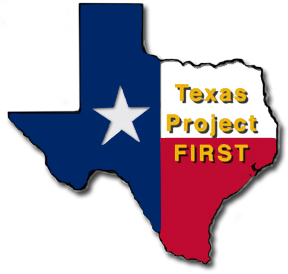en Español • Share • 
Under IDEA “eligible” children with disabilities, ages 3-21, are entitled to receive a free and appropriate public education (FAPE). The public school program for young children, ages 3-5, is called the Early Childhood Special Education (ECSE) (formally called Preschool Program for Children with Disabilities (PPCD).
Some people have the misconception that ECSE is a “place” – a self-contained classroom where preschoolers with disabilities are all grouped together. However, special education and related services can be provided in a variety of settings.
What are the ECSE Options?
Just like services in grades K-12, there are a continuum of placements available for children age 3-5. Here are some options to discuss:
- Dual enrollment, in which children stay at home or attend a private preschool (at the family’s expense) while receiving special and related services through the school district.
- Head Start usually has income requirements for participation, but these can be offset by the fact that Head Start programs are required to have 10% of the student population as children with disabilities.
- Pre-Kindergarten, other programs for children ages 3-5 that may be offered by the school district (specific eligibility requirements) but often children with disabilities may participate.
- A segregated placement on a specific campus in your district (may or may not be your home school) that only has children with disabilities.
Under IDEA, preschool programs for children with disabilities should be delivered in the “least restrictive environment” (LRE). In other words, children with disabilities should be placed to the fullest extent possible in the same setting as students without disabilities. It is often appropriate for special education services to be delivered in a regular classroom, where children have the advantage of same-age language and behavior models and the opportunity to develop friendships. When considering placement for ECSE, be sure to explore options that would offer your child a more inclusive educational setting.
You the parent, along with other members of the ARD/IEP committee will make the decision for placement based on a variety of things (i.e. needs and present levels as identified in the evaluation process, goals to be worked on). For more information on how to decide, see Placement.
When does ECSE start?
ECSE program services will not begin until your child completes the initial evaluation process. Based on a completed evaluation, your child needs to be determined as eligible for services. If you child is eligible, you will have an ARD/IEP meeting where you and the school will decide on the services to be provided. After you agree to the services and give your consent for services to begin, your child can start the ECSE program.
What will my preschooler learn?
Once eligibility is determined, the ARD committee makes decisions about the appropriate special education and related services for the child. This information is documented in the child’s Individual Education Program (IEP), which outlines what you expect your preschooler to learn over the next year, including measurable objectives and goals. An ARD committee will meet at least once a year to determine if the goals were met and to develop new goals for the upcoming year. (See The Special Education Process Step-by-Step to learn more about the special education process.)
You are an important part of the decision-making process. Be sure to familiarize yourself with TEA’s Prekindergarten Curriculum Guidelines. Knowing what is expected of typically developing preschoolers in Texas is a good starting point for developing your child’s IEP.
Don’t let your preschooler’s disability get in the way of high expectations. Within any preschool classroom, children exhibit a diversity of knowledge based on differences in development, cultural background, and previous learning experiences. The preschooler should begin at his or her own level with a plan that builds on his or her individual strengths and skills. Children with disabilities may need accommodations or modifications to the curriculum guidelines in order to benefit from them. Research proves that all preschoolers benefit from a language-rich environment that promotes speech and early literacy.
Also, an effective preschool program teaches developmental skills through active play. Play allows children to explore their surroundings, learn important social concepts such as turn-taking, appropriately express themselves, and develop confidence to try new things and solve problems in a safe, supported environment. Look for a teacher that interacts with preschoolers in child-initiated play that promotes appropriate social skills and language modeling.
How will my child get there?
Transportation is a related service that should also be discussed in the ARD meeting. The district is obligated to provide transportation if the child’s parents cannot. This also applies to 3-5 year olds who may not be attending the school’s preschool program, but who need special transportation in order to get to speech or other therapies they receive through the school district.
Least Restrictive Environment/Inclusion
- Preschool LRE Environments/Settings Question & Answer Document - Access to General Curriculum (Region 20 ESC)
- OSEP Dear Collegue Letter Regarding LRE for Preschool Children (pdf) - This letter clarifies how least restrictive environment (LRE) requirements apply to the placement of preschool children with disabilities.
- Early Childhood Technical Assistance Center - Tools for Understanding LRE and Research & Studies on Inclusion
- Division of Early Childhood (DEC) and National Association for the Education of Young Children (NAEYC) – Joint Position Statement on Early Childhood Inclusion
- Inclusive Schools Network - Early Childhood Resources
- Disability is Natural articles by Kathie Snow – Environment, Environment, Environment and Special Education Preschools, Help or Hindrance
Texas Education Agency
